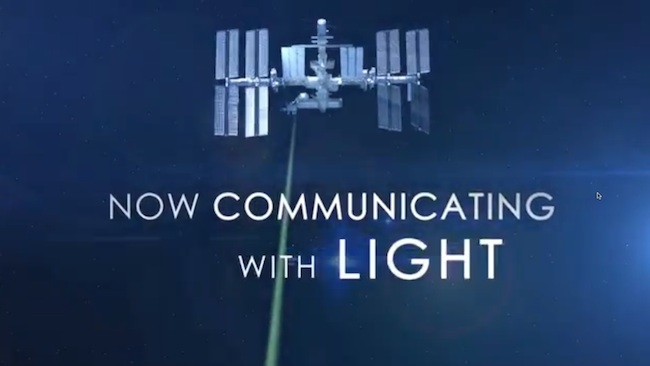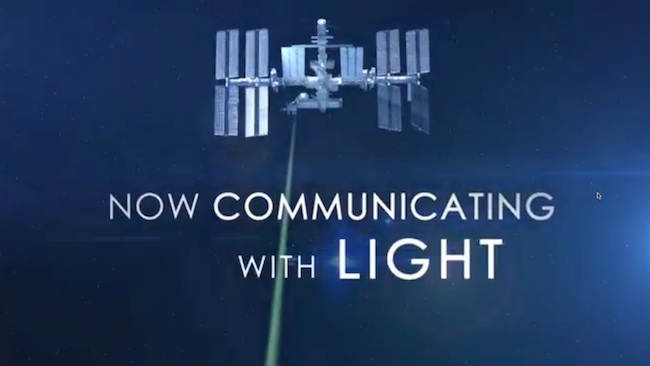

NASA has successfully beamed a short HD video, dubbed Hello World!, 260 miles from the International Space Station to Earth using a new laser communications instrument that achieved peak transmission rates of 50Mbps.
The video was part of the first 175MB test transmission from the new OPALS unit (Optical Payload for Lasercomm Science) which the space agency hopes can significantly boost communication bandwidth — by factors of between 10 and 1000x — for it over the radio portions of the electromagnetic spectrum. The entire transmission lasted 148 seconds and reached a maximum data transmission rate of 50 megabits per second.
According to the Agency took OPALS 3.5 seconds to transmit each copy of the Hello World! video message, which would have taken more than 10 minutes using traditional downlink methods.
Because the space station orbits Earth at 17,500 mph, transmitting data from the space station to Earth requires extremely precise targeting; a process that NASA characterises as aiming a laser pointer at the end of a human hair 30 feet away — and keeping it there while walking.
It manages this by locking OPALS locked onto a laser beacon emitted by the Optical Communications Telescope Laboratory ground station at the Table Mountain Observatory in Wrightwood, California. It then begins to modulate the beam from its 2.5-watt, 1,550-nanometer laser to transmit the video.
The flight system is composed of a sealed, pressurised container housing commercial-off-the-shelf avionics boards and the laser; and an optical head that contains an uplink camera and laser collimator for the downlink and sits on a two-axis gimbal. The ground system uses the 1-meter primary telescope aperture at Wrightwood to receive the downlink signal and transmit the reference beacon. It relies on orbital predictions built from ISS GPS state vectors to follow the ISS as it traverses its path across the sky.
"It's incredible to see this magnificent beam of light arriving from our tiny payload on the space station," said Matt Abrahamson, OPALS mission manager at NASA's JPL in Pasadena. "We look forward to experimenting with OPALS over the coming months in hopes that our findings will lead to optical communications capabilities for future deep space exploration missions."
View the "Hello, World!" video transmission and animation of the transmission between OPALS and the ground station below:
Tags: Technology


Comments